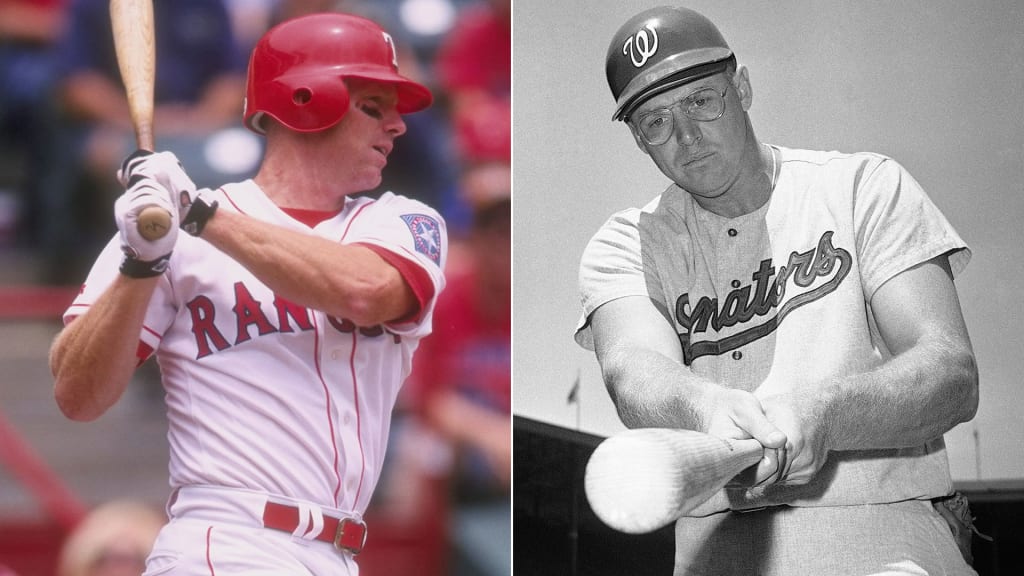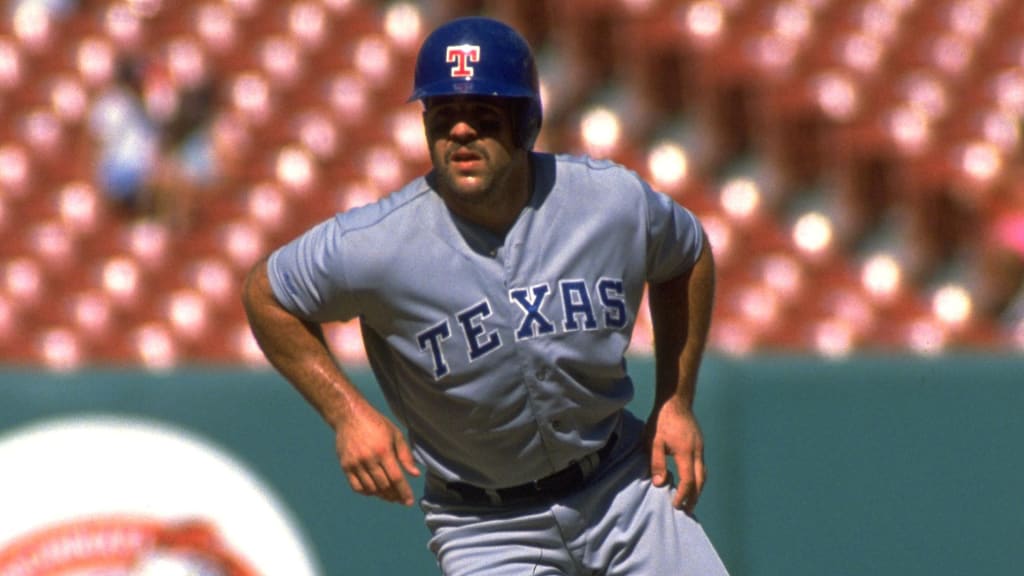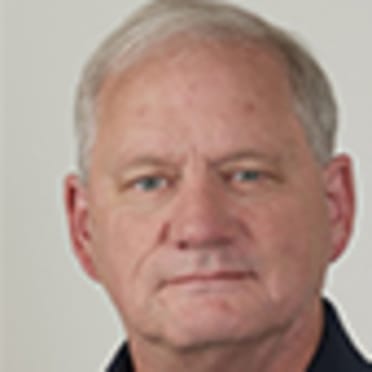
ARLINGTON -- No one loves a good debate quite like baseball fans, and with that in mind, we asked each of our beat reporters to rank the top five players by position in the history of their franchise, based on their career while playing for that club. These rankings are for fun and debate purposes only … if you don’t agree with the order, participate in the Twitter poll to vote for your favorite at this position.
Here is T.R. Sullivan’s ranking of the top 5 left fielders in Rangers history. Next week: center field.
1. Rusty Greer, 1994-2002
Key fact: Greer ranks fifth in club history (minimum of 300 games) with a .305 batting average, fourth with a .387 on-base percentage and eighth with an .865 OPS.
Johnny Oates did two significant things regarding Greer when he took over as Rangers manager in 1995. For one, he made it clear Greer shouldn’t be worried about “moving runners over.”
That’s a time-honored fundamental in baseball that with a man at second base, a hitter should “give himself up” by hitting a ground ball to the right side and move the runner to third. Oates told Greer not to move them over but drive them in.
Oates also told Greer -- a left-handed hitter -- he wasn’t a platoon player. Oates committed to playing Greer every day. Greer rewarded the manager with four straight outstanding seasons while the Rangers were winning three division titles in 1996 and '98-99.
Greer also played the outfield with reckless abandon, diving and crashing into walls to make a catch. That required someone to write the occasional newspaper article suggesting that would lead to career-ending injuries.
That ultimately proved to be the case. Greer has had nine surgeries related to baseball injuries. But he wasn’t about to change his style. No chance.
2. Frank Howard, 1965-72
Key fact: During a phenomenal six-game stretch from May 12-18, 1968, Howard went 13-for-24 with 10 home runs and 17 RBIs.
Howard and Greer were two completely different players. But both deserve strong consideration as the best left fielder in franchise history if the Senators years – 1961-71 – are considered. They are.
Howard had a four-year stretch in 1967-70 where he hit .278/.376/.547 and led the Major Leagues with 172 home runs. He was fourth with 432 RBIs.
During his eight years with the Senators/Rangers, Howard hit .277/.367/.503 for an .870 OPS. Greer played nine years and hit .305/.387/.478 for an .865 OPS. Howard played on bad teams in a pitcher’s park and at a time when pitching was dominating the game.
Greer was just the better overall player. He was much better defensively and running the bases. Howard was slow, although he had a strong throwing arm. Later in his career, he started being used at first base.
If they had been on the same team, Greer would have played left, and Howard would have been a DH.
3. Al Oliver, 1978-81
Key fact: Hit .319 over four years with the Rangers, fourth highest in the American League in that stretch.
Oliver once said he could fall out of bed and hit .300. Or something like that.
Oliver had no trouble getting out of bed during his four years with the Rangers. He hit well over .300 in all four seasons and his .319 average is the highest in club history for a minimum of 300 games.
Oliver did not walk a lot and he didn’t hit many home runs. He hit 20 or more in just two of his 18 seasons. What he did do was hit the ball hard. Oliver was a line-drive hitter, and some say he hit the ball harder than anybody else in the game.
That may be a slight exaggeration -- he played at the same time as Willie McCovey and Willie Stargell -- but Oliver truly was a professional hitter

4. David Murphy, 2007-13
Key fact: The Rangers averaged 93 wins per season in 2010-12 and Murphy hit .291/.356/.445 over that stretch.
Murphy played six full seasons with the Rangers. He was in the Opening Day lineup for three of them.
Every Spring Training, writers wrote the same obligatory story: Where would Murphy play and how much playing time would he get? Murphy had to answer those tedious questions every year and did so patiently, even though what people expected would happen and what actually happened ended up being two completely different things.
Every year Murphy would get 400-460 at-bats and be a valuable member of some of the best teams in Rangers history. Murphy wasn’t as good as Greer, but he was held in the same high esteem by teammates, media and fans.
5. Pete Incaviglia, 1986-90
Key fact: He hit 30 home runs and drove in 88 runs in 1986, both the highest in one season for a Rangers rookie.
Incaviglia played three seasons at Oklahoma State and was to college baseball what Herschel Walker was to football. Or Bo Jackson. Or Hercules. He still holds the collegiate records for career (100) and single-season (48) home runs. Those records are likely out of reach because of current collegiate bat restrictions.
The Expos drafted him eighth overall in 1985 but Incaviglia refused to sign because he insisted on the chance to skip the Minors. So, the Expos traded him to the Rangers for pitcher Bob Sebra and infielder Jim Anderson. It was a huge coup for the Rangers and resulted in a rule -- since modified -- that clubs had to wait a year before trading their Draft picks.
Incaviglia was becoming legendary even before he played his first game. In Spring Training, he hit a ball so hard that it put a hole in the wooden outfield fence at Pompano Park. That the wood was already rotting was conveniently overlooked, but other hitters were hitting the ball off the same fence and not doing similar damage.
Incaviglia was with the Rangers for five seasons. The power was there but also high strikeout totals and not many walks. The Rangers released him in Spring Training in 1991, a shocking move that caught almost everybody by surprise.
Incaviglia never wanted to play in the Minor Leagues but did so quite a bit at the end trying to keep his career alive. He has also had a successful 10-year run as a manager in independent leagues with an overall winning percentage of .551 and a couple of championships.

Also receiving consideration
Gary Ward: He was with the Rangers in 1984-86 and an All-Star in 1985. But trading young pitchers John Butcher and Mike Smithson for an average right-handed-hitting corner outfielder was a head-scratcher.
Billy Sample: A solid left fielder with speed, he is also a Renaissance Man whose post-baseball career includes writing, broadcasting and filmmaking. He also played on the real-life high school football team that lost the state championship game in the movie "Remember the Titans."
